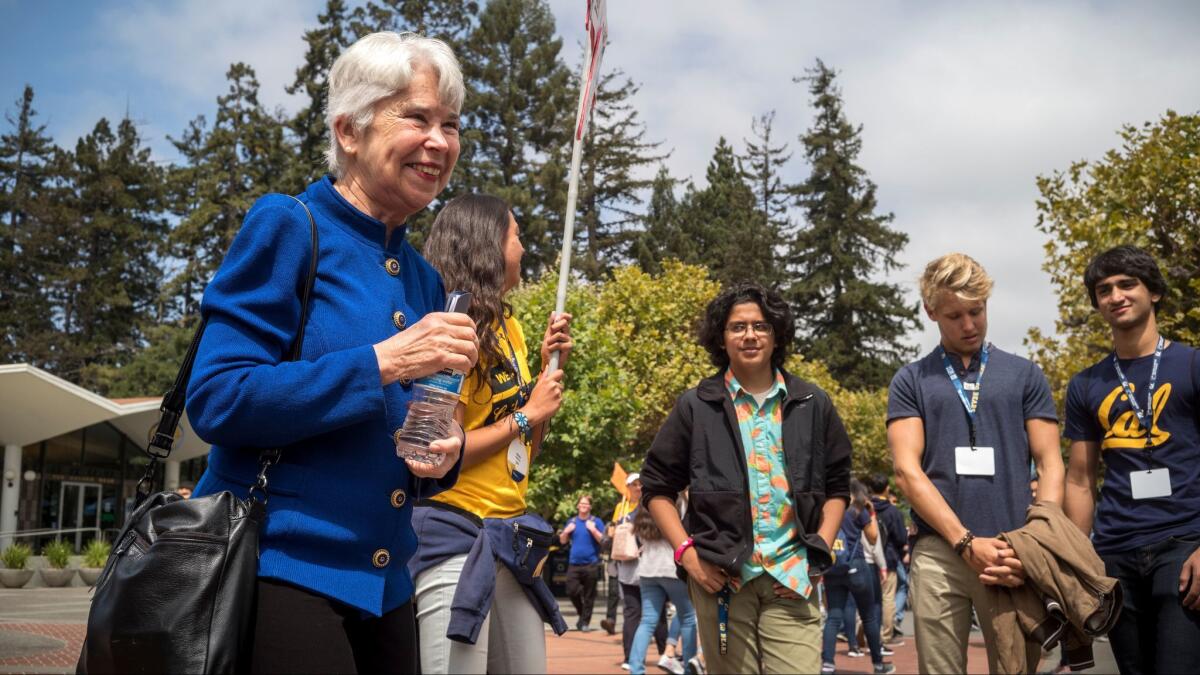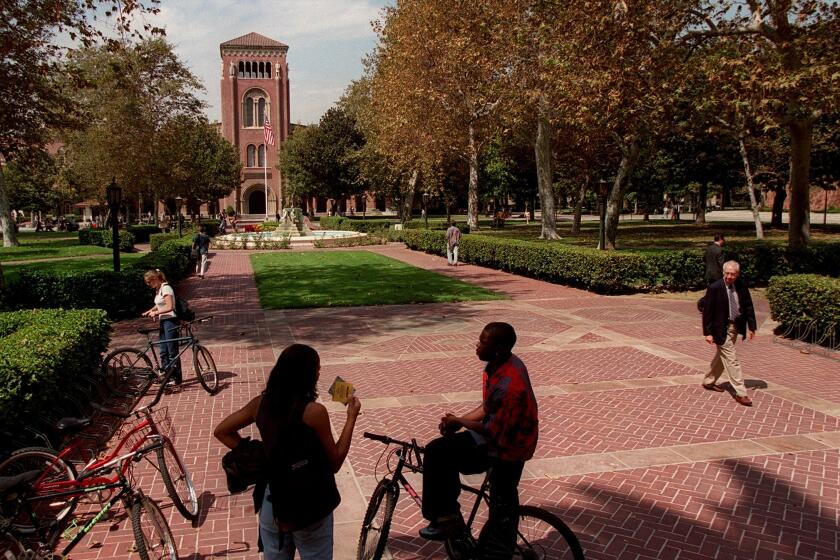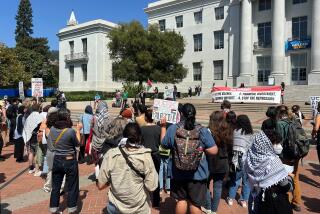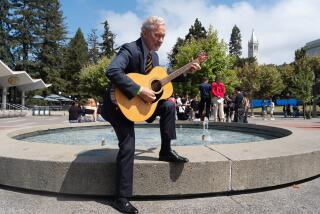UC Berkeley chancellor calls reopening amid crises ‘hardest situation I’ve ever encountered’

- Share via
The University of California’s first two campuses to reopen this fall, Berkeley and Merced, begin classes Wednesday amid multiple crises: fear of COVID-19 spikes among students, shuttered classrooms that have forced online learning, and battered university budgets.
The early reports from some college openings throughout the nation are unsettling. Despite months of careful planning and strict rules for testing, contact tracing, masking and social distancing, the virus is surging as students have begun gathering in groups large and small after months apart from friends.
At USC, officials announced an “alarming surge” in COVID-19 cases just one week into the semester. The University of North Carolina at Chapel Hill reported that 31% of students had tested positive for the virus this week after the university reopened with in-person classes and then quickly shut down. The University of Alabama reported more than 560 new cases less than a week after classes began Aug. 19.
Now UC campuses face their own tests.
UC Berkeley was one of the first universities in the state to shift to online learning. Chancellor Carol Christ said her decision came after a Berkeley biostatistics professor, Nicholas Jewell, laid out how rapidly and dangerously this virus would spread during a March 7 lecture. Two days later, she announced the shutdown.
This fall, UC Berkeley expects 1,600 students to move into campus dorms — short of filling 3,000 available spots as many cancelled housing contracts after learning that almost all classes will be remote. As of Sunday, only three of 1,340 students had tested positive for COVID-19, Christ said. All students are required to sequester for a week, then take another test, and follow strict masking and social distancing rules. Students living in off-campus apartments are being urged to do likewise.
At the same time, the pandemic has spurred Berkeley’s worst ever financial crisis. The campus expects a financial hit of $340 million through next June, the result of less revenue from housing, dining, athletics and performances, along with higher spending for cleaning, testing and instructional technology. That is projected to cause a $200-million budget deficit for fiscal year 2021, which campus officials expect to cover by taking out short-term debt along with other actions.
Christ said she expects a much improved online learning experience this fall because faculty and graduate students have spent the summer developing more robust offerings than the “on-the-fly” instruction abruptly launched in March. To ensure equitable remote learning opportunities, the campus has invested $4.6 million for 3,000 laptops, 800 WiFi hot spots and other tools for lower-income students.
“It’s certainly the hardest situation I’ve ever encountered, by far, in my time as chancellor,” said Christ, who spoke of the challenges in an interview with reporters this week:
Most difficult issue?
Christ: The hardest thing in this pandemic is how fast facts on the ground change and also knowledge changes. So we’re still constantly reassessing. What’s the best testing protocol? What’s the best test? What’s the best contact tracing? We’ve all had to learn to be very agile, really flexible in our decision-making.
I’ve never had to lead through anything as complex as this. This is not one crisis. This is three crises. This is the pandemic. It’s the financial crisis that’s consequent to the pandemic. And it’s the crisis that the George Floyd murder spurred in which there’s this urgent questioning about systemic racism and social justice. And now we add to that the bad air... with the fires in Northern California.
Will Berkeley police student parties?
We have as a campus limited power over congregant living that we don’t ourselves control. Fraternities would all fall into that category. But we want to develop a strategy with the city, which makes sure that consequences are real and immediate for violating the city’s public health orders. We’re using all the persuasion tools that are in our tool bucket to try to persuade students to act responsibly.
It’s a complicated issue because what we don’t want to do is create a situation where students are so frightened of punishment that they don’t get tested when they’ve been in an unsafe situation. The testing protocol that we have for the campus dormitories is twice a week. We just decided to extend that to our congregant living off campus like fraternities because I believe that the key to controlling this pandemic is testing and contact tracing. That’s the most powerful tool we have ... not the chancellor’s yelling at students. So we’re really working to make sure that students feel no barriers to testing and no shame in testing so we can make sure to control the epidemic.
What about equity for less-advantaged students?
What we’ve tried to do in all our decision-making is to apply an equity lens. One example of a lesson learned, which really surprised me, which is we developed a laptop program for students on financial aid. We found that by far, the greater barrier was really poor internet connectivity. We really have to be so alert to ways in which ... experiencing a Berkeley education is magnifying inequity. We’re all in the same storm, but we’re not in the same boat. And what we’re trying to do is be very alert to the leaking and fragile boats out there and trying to provide resources to enable students to have access to the same opportunities as their peers.
How will you meet the calls for racial justice?
I think this is both an obligation of the university to respond to this urgent questioning of race and injustice in our society, as well as an opportunity for us. So we’re going to have a set of public programs. We are involved in the unnaming of several buildings. We are going to launch a Black history project in order to excavate the history of Blacks through the length of Berkeley’s history. We’re trying to expand undergraduate opportunities of underrepresented students for research and internships. And then we received the report of the independent advisory board on police accountability and community safety and we’ll be responding within a few weeks to the recommendations.
Are you nervous about what lies ahead?
Because instruction will be wholly remote, I don’t think starting instruction carries particular risk. I’m much more concerned about the risks resulting from students socializing off campus. I’m excited about the beginning of the semester, as I always am, and all the personal and intellectual discovery it will stimulate in our students, even in this strange remote world.
California colleges can reopen this fall with limited in-person classes and greatly reduced dorm life, state public health officials said Friday as they issued long-awaited guidance for how campuses can operate amid a surge in COVID-19 cases.
More to Read
Sign up for Essential California
The most important California stories and recommendations in your inbox every morning.
You may occasionally receive promotional content from the Los Angeles Times.















